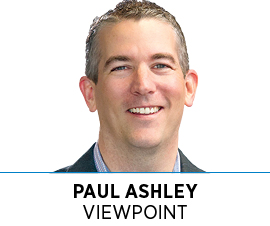Subscriber Benefit
As a subscriber you can listen to articles at work, in the car, or while you work out. Subscribe Now It seemed like a good idea: “Since so many people are frustrated by health care pricing that seems secretive and arcane, let’s require hospitals to make their prices public.”
It seemed like a good idea: “Since so many people are frustrated by health care pricing that seems secretive and arcane, let’s require hospitals to make their prices public.”
And that’s exactly what the federal government did with the rule that went into effect Jan. 1 requiring hospitals to post their charges on their websites. The result? A swift and vigorous backlash. Hospitals, benefit providers, patients, elected officials and more slammed the rule as causing more problems than it solves.
I think they’re overreacting. True, the rule is not delivering the benefit its authors had hoped, but it’s also not worthless. I believe it eventually will be seen as a necessary step toward real health-care-pricing transparency.
Hospitals traditionally kept their price lists (their “chargemasters”) out of the public eye, mostly because transparency is bad for competition and would limit their ability to negotiate with third-party payers. Complicating matters further is the fact that the prices they did negotiate weren’t “final” consumer prices because other factors, such as specific coverages and deductibles, meant that the question, “How much does this procedure cost?” was usually answered with, “It depends.”
Now that price lists are posted, consumers have discovered they’re not user-friendly. While some area hospitals posted links to pricing prominently on their websites, others buried them as hyperlinks beneath multiple layers of webpages. Most lists are incredibly long and filled with abbreviations, numeric codes and jargon.
Open the list from one central Indiana hospital and you’ll discover more than 160,000 costs in no apparent order. Another hospital organized costs a little better, but they’re fairly indecipherable—searching under “Cardiology Unit002,” for example, you’ll find that the price for “Collect bld from picc ven nos” costs $50.70. And so on.
So where does this leave us? On the one hand, no better than before. On the other hand, it has put a sharper focus on health-care-cost transparency, and that’s a good thing. It also has highlighted some potential solutions. Many hospitals have complemented their chargemaster lists with cost-calculator tools that allow consumers to enter pertinent information—including insurance coverage, deductible amounts and more—to get accurate cost estimates. Health plan third-party administrators and insurers offer similar cost calculators tailored to their customers. Meanwhile, I’m sure scores of tech wizards are working to develop programs and apps aimed at this problem.
The best solutions will come from collaborations between health care providers and payers. With the technology at their disposal, they could create systems that allow consumers to check prices based on a wide range of factors and variables. With the data at their fingertips, they could create dynamic price lists that respond to the rapidly changing marketplace. What they lack is the impetus and will to make this happen. To get that into place, we need consumers to get into the game more. They need to demand legitimate and workable transparency.
The good news is that consumers who are more tuned into health care pricing will be more attuned to their health, and they will be more inclined to seek out high-quality care at a reasonable price.
We believe the chargemaster rule is pushing us toward that kind of solution. No, it isn’t the transparency we all want. It isn’t the solution. But it is progress, much-needed progress.•
__________
Ashley is managing director of FirstPerson Advisors.
Please enable JavaScript to view this content.
